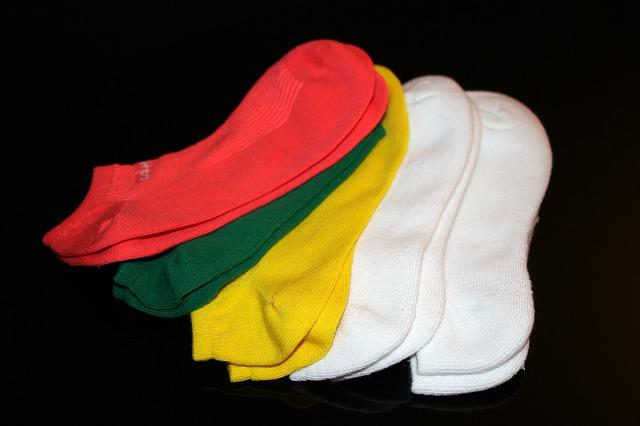Running is one of the great ways to get in shape, feel better, and even meet new people. Running doesn’t have to be difficult; all you need are some comfy shoes and a will to move a little or a lot at your own speed.
How to Train to be a Runner
Pick A Race near your town!
The best way to start running is to look for a race near your home. Commit by signing up for it. This will help you focus and keep you on a regular running schedule. A beginner can run any race, short or long — you need to allow yourself enough time to get ready. Most new runners start with a 5K. Most likely 5K race attracts a fun, relaxed group of new runners and walkers. Try to run three times weekly to prepare for this type of race. You will run for 30 minutes twice a week and a little longer on the third day of the week. If you can’t run the entire 5k, you can always use the run-walk method instead of running the entire distance. About seven weeks of this pattern of training should get you ready.
Running Form
Some people walk on their heels naturally, while others walk on their toes. The good news is there isn’t any better form than the other. You are also less likely to get injured if you maintain your normal stride. The more you run, the more comfortable your stride will feel, and even better, your body will become more efficient.
Run Method
The Run and Walk Method is great for beginner and seasoned runners to improve their race timings. One of our favorite coaches, Olympian Jeff Galloway, pioneered the system. Contrary to popular belief, the strategy does not entail walking while you are fatigued; rather, it entails taking small walk breaks when you are not. You can choose whichever walking/running ratio works best for you.
Among the suggested combinations are:
- For the beginners: run for 20 to 30 seconds and walk for 1 to 2 minutes
- For the intermediate: run for 1 to 5 minutes and walk for 1 to 2 minutes
- For the experienced: run for 6 to 8 minutes and walk for 30 seconds to a minute
Taking these breaks makes running less arduous and minimizes the risk of injury since it allows the muscles to recuperate regularly during the long run.
Some runners dislike the walk-break strategy because they believe a race should be completed without stopping. Go for it if that’s your objective.
Select a Training Program
Numerous sophisticated training plans are available online, but we believe in keeping things simple. Here is the fundamental formula for a successful training program.
- Train three times every week.
- Run or walk for 20 to 30 minutes twice a week.
- On weekends, go for a longer run or run/walk (40 minutes to an hour).
- On your off days, rest or cross-train.
- Maintain a conversational pace.
- Consider taking frequent walks.
Your Equipment
To get started, you don’t need much. It all begins with the proper pair of sneakers.
- Select a Shoe Ignore shoe sales tactics concerning pronation or high arches, and don’t let brand names persuade you. Instead, try on four or five pairs of running shoes, jog around the store, and let your feet make the decision. Researchers discovered that the essential attribute of a running shoe is (brace yourself) – comfort in a comprehensive evaluation of the science of running shoes and injuries. That’s all. Choose a comfortable shoe.

- Socks While most runners focus on their shoes, socks can also be crucial. Bunched-up sock blisters are excruciatingly painful and can keep you from moving for days. You want a breathable, snug sock that isn’t too tight. Some running socks are a sweat-wicking material that wicks moisture away from your feet, preventing bacteria from gathering between your toes and causing foot odor.
Choose a sock with no or few seams, and choose that one that covers the back of your ankle where shoes can rub. Try on socks at the store and choose one or two. Before purchasing many pairs, test them to see how they work when you run and sweat. - Make Your Playlist Running should feel rewarding. If you enjoy the peace and alone of running, choose a scenic road and go for a run. However, many people like to travel with a mix of uplifting music, short podcasts, or books on tape. My personal favorites for training are books by comedians, who frequently read their audiobooks and leave me laughing so hard that the pains of running go away.
Fuel Your Physical Structure
When you start jogging, what you put in your body is equally vital as what you wear. Consider food to be part of your equipment.
- How to Eat Form a fist. That’s roughly the size of what you should eat before and after a run. So, consider it an appetizer rather than a dinner. According to Leslie Bonci, director of sports nutrition at the University of Pittsburgh Medical Center and a qualified specialist in sports dietetics, it should also include carbs and protein. The classic peanut butter sandwich is an excellent post-workout snack. Eat half of the sandwich an hour before your run and the other half shortly after. Low-fat chocolate milk also works well. For some nutritious workout fuel, try some of these dishes.
- When Should You Eat? One of the common mistakes that novice runners make is not eating before exercise, which leaves them with no fuel to keep going. Eating one hour before your run increases energy without unsettling your stomach.
- When you finish jogging, eat within 15 minutes to aid your body in re-synthesize muscle glycogen and recovering faster. It may also aid in the prevention or reduction of delayed-onset muscular soreness.
- Your workout snack should not be used in place of a meal. Maintain your breakfast, lunch, and supper routines while adding a pre- and post-exercise snack. This entails eating at least five times every day.
Hydrate
Quench your thirst, but not too much.
- Water Hydration is a major issue for first-time runners, but it shouldn’t be. The greatest way to stay hydrated when running is to drink when you are thirsty. When you run, you can take a regular-size water bottle in one hand or plan a route around a few water stations.

- Sports Beverages Electrolytes, such as sodium, are water-soluble nutrients that can exit the body through sweating. Most sports drinks can replace these electrolytes in the body. The length of your workout should be the rule for what you drink.
- Water is fine if you run for less than an hour. After an hour of jogging, your body needs those nutrients, so a few sips of a sports drink might help you stay energized. However, like with everything, a small amount of a sports drink can go a long way. These drinks frequently contain sugar, which your body does not require if you follow a balanced diet. They can also be quite costly. So, while sports drinks are useful for elite athletes and people who exercise for long periods, water is generally the better choice for individuals who exercise moderately for an hour or less.
- Excessive Water You can consume too much. So, don’t guzzle down glasses of water before a run, thinking it would keep you hydrated. Excessive fluid consumption will not relieve cramping or prevent heat-related diseases. These problems are usually the result of pushing yourself too hard. In any case, overhydration can be more dangerous than dehydration. So, only drink when necessary, and don’t overdo it.
Are you running to lose weight?
Running is a terrific way to keep fit, but it isn’t always a good way to lose weight. Here are some pointers to help you slim down while toning up.
- Prevent Runner’s Weight Gain Running burns calories, so your body will be hungry, and you may eat more than normal. Surprisingly, many beginning runners gain weight rather than lose weight. To avoid this, try exercising for 30 minutes. The shorter workout still gets you in shape, burn some calories, and gets you ready for race day.
- Count Your Calorie Consumption Running burns roughly 100 calories every mile, but it doesn’t mean you’ll lose a pound for every 35 miles you run. Running more will make you hungrier and more inclined to overeat. The difficulty of your workout, such as jogging up a hill, will boost the number of calories you burn. Because your body will be tired, you may need to sleep a little longer. All of these will have an impact on weight loss. You may lose weight as you become more fit if you eat a balanced diet and strive to maintain your calorie intake while running.
Avoid Injury
The most difficult aspect of running is the discomfort or possible injuries that might come with your new regimen.
- Stretching You don’t have to sit on the curb, touch your toes, or draw your legs backward to stretch your thigh muscles. While there is fresh evidence that static stretching (holding a stretch for some time) can help prevent acute muscular injuries such as rips or strains, such injuries are uncommon in runners. Holding a stretch for too long can make your muscles weaker.

- Attempt dynamic stretching This warms your muscles by repeating movements. A good warm-up for runners can include squats and lunges. Some professional runners recommend pre-run warm-ups, but no studies have demonstrated that dynamic stretching avoids injury.
- What’s the bottom line? Don’t panic if you don’t have time to stretch or warm up before your run. If you enjoy stretching before a run, go ahead and do it. Just don’t hold your stretches for too long. Keep your muscles moving to avoid straining them before hitting the road.
- Straight-Leg-March Try to stretch your hamstrings and gluteus muscles if you prefer to stretch before you run.
Stitches on the sides
A side stitch can wreck an otherwise perfect run. Runners who slump their backs frequently are more prone to have spasm-like cramps in their abdomen. Take a deep breath to your back and attempt to run more upright when you feel a stitch coming on.
While side sutures are typically felt above the hip, they can occasionally be felt up to the shoulder. If the pain is on the left side and lasts more than a few minutes after you slow down, it could indicate a heart attack. So be cautious and see a physician.

Cramps in the legs
Cramps during exercise may be caused by over-excited nerve endings, most likely due to tiredness. Triathletes and ultramarathon runners who cramp during a race are more likely to be racers who bolt from the start, establishing an early pace significantly quicker than their regular training speed, inviting exhaustion. They also frequently have a history of the condition, implying that once muscle cramps, it is primed to spasm again.
Fortunately, treatment is straightforward. Expert runners suggest stretching the problematic muscle. Stretching immediately settles the muscle’s frantic, misfiring nervous system connections.
Pickle juice, known to relieve cramps, is recommended by some athletes.
Feet
The feet are the most commonly injured part of a runner. Pounding your heels and toes on the pavement can create serious discomfort and even be painful. Many runners get blisters, calluses, and bruises, as well as the loss of a toe or two that inevitably occur after logging mile after mile of running. Unfortunately, aside from wearing comfortable shoes and high-quality socks, there isn’t much one can do to avoid these injuries.
The good news is that plantar fasciitis, one of the most prevalent foot problems, can be relieved with simple stretching.
To Conclude
Having said all this, running is an individual sport, and you can do this at your own pace, so you don’t injure yourself. Just like any exercise, you need to have fun while you are doing it. You can always walk in between running. The key is not to overwhelm yourself, so grab one of your most comfortable pairs of shoes and get some fresh air while you are running or walking.
The emphasis is on getting in shape and staying healthy. If you can shed some extra weight, it is even better. Not everyone has to train to run a marathon. Don’t worry if you’re not a natural runner. Some of us aren’t, so put on some comfortable shoes and grab some fresh air. Jog a bit, stroll a little, and feel proud of yourself for doing something beneficial for your body.
